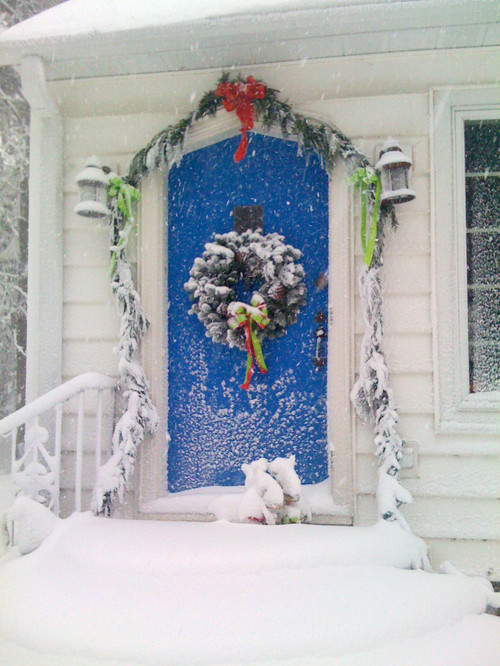I'm sure we all have them: Those plants that the rest of the world finds innocuous or maybe even loves, but we can't stand. I have a short list of plants that fall into that category and it always sort of surprises me that I carry such a grudge against these plants, especially when I see them in someone else's garden and (gasp!) sometimes sort of like them.
So here's my list of plants you won't catch me planting again (probably):
 1. Coreopsis
1. Coreopsis
OK, I should have known better. This was one of those pass-along plants that the gardener I got it from had "plenty to spare." This, in case you haven't figured it out, is code for "It will take over your garden faster than a garlic mustard weed farming operation." And certainly it has its good points. It does bloom its head off. OK, well that would be its one good point. But it also looks like crap if you don't stay on top of the deadheading and it flops all over the place making for a garden that looks like a small tornado has gone through. Every day. I know there are lots of varieties of coreopsis and I suppose many are better than others, but my experience with what I assume was a fairly common variety of this plant was so heinous that my stomach churns when I hear the word "coreopsis" and I actually swore off any yellow flowers out of my garden for about five years. Can you imagine? Do you know how many flowers are yellow? Anyway, after several years of pulling seedlings, I eradicated this little bugger from my garden.
Update summer 2013: Yeah, I relented on this one. Haven't visited a garden with gorgeous patches of threadleaf coreopsis 'Moonbeam', I went out and got some. I put three in the circle garden and I hope they will behave themselves. I have sworn to myself, however, that I will deadhead them promptly and not give them a chance to set seed.
-------------------------------------------------------------------------------------------------------------------------

2. Artemesia 'Oriental Lime Light'
This thug has no redeeming value. Period. Oh sure, I know you're look at it and thinking, "Oh my gosh, it's so bright! What a great way to brighten up a corner of the garden. Imagine it with purple flowers or foliage nearby!" Nope. Imagine an entire garden full of it. Because that's what you're going to get. I actually had a hard time finding this plant and if I recall (I've gone through extensive therapy to rid myself of the nightmares this plant caused me, but I have some bone-chilling recollections of it) I planted two small containers of it. Within a summer it had more than filled the area I had in mind for it. By the next spring it had taken over the entire bed and was threatening to move into the house.
I'd like to be able to tell you that I've closed this disturbing chapter in my life, but alas, this artemesia continues to haunt me. It has been at least six years since I attempted to remove the last vestiges of this plant and it is STILL popping up in my garden. Just a few weeks ago I was in the circle garden and had that creepy feeling like someone was watching me. I turned around and this is what I saw:

-------------------------------------------------------------------------------------------------------------------------

Cherry Bells: Its baaaaaa-aaaaack. As is, apparently, that lovely weed in the foreground of the photo. Just keeping' it real, folks.
3. Campanula punctata 'Cherry Bells'
I have mixed feelings about this plant. It really is pretty and there's a reason I begged some from my mom's garden (hmmm, do you notice a pattern here? What kind of parenting is this anyway?) The blooming time is not long, but honestly, that's not unusual for my garden. I'm perfectly willing to deal with gorgeous blooms for a short time if they are worth it. Once again, the problem with this plant is its vigor. It just kept spreading and spreading and spreading. I dealt with it for a couple years and this spring I finally started pulling it out. And just when I thought I had gotten it all … well, you know the drill. It's still there. In full force. Most of them didn't get a chance to bloom, which is really the worst-case scenario. Now I have mini Cherry Bells all over the place but they aren't even going to bloom.
I will say, if I could find a way to effectively contain Cherry Bells, she could be invited to stay. But she's a rude one, and really has no manners.
-------------------------------------------------------------------------------------------------------------------------

4. Sea Holly
I fell in love with sea holly when I saw it in a bouquet, and I think that is really the higher purpose that sea holly was put on this earth for: flower arrangements. I will give sea holly a partial pass on my judgement of it, because I planted it in part sun, not full sun, and perhaps that's why I was disappointed with it's performance. The flowers were still beautiful and a nice shot of blue. It was a plant that everyone commented on. But its tall stems flopped the minute they hit about 30 inches and it was a holy mess from then on. Because the stems are skinny, it was hard to stake them in any attractive way and ultimately it had to go. But it was stubborn and apparently liked it in my garden and kept coming back. I haven't seen any signs of it in my garden for a few years now, but it lives on … in the gardens of all the people who told me they wanted some, no matter how unruly it was.
So, what do you think? Am I crazy for banning these plants that plenty of people love? And do you have a list of plants that you've banned from your garden?















































